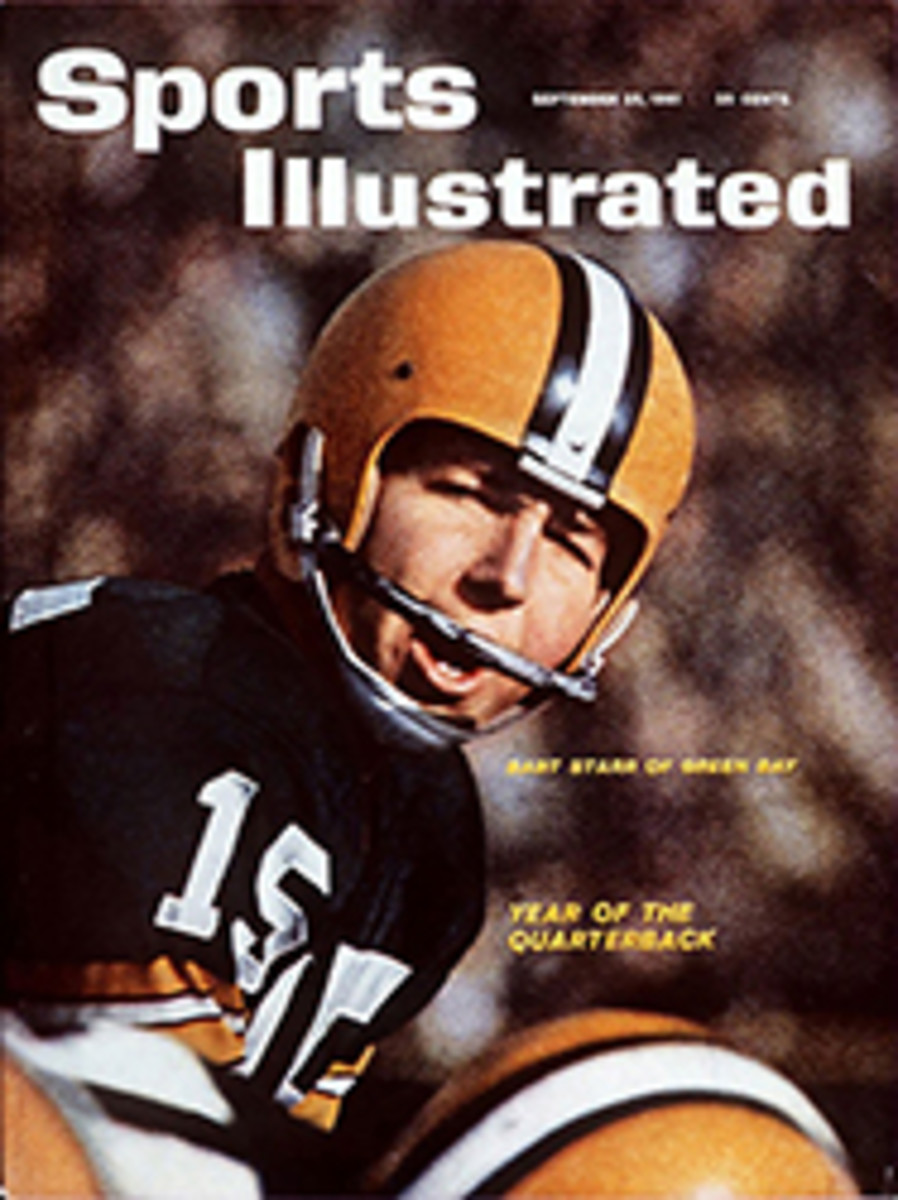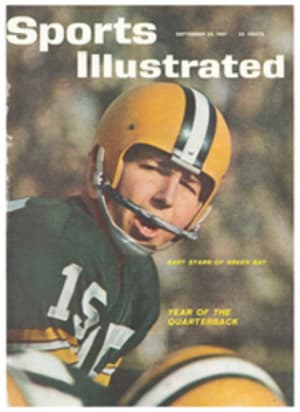
BIG JACK LEADS A NEW NEW WAVE
Championship golf is considered to be a game where the poise and experience of older players pays off with victory, but by the quarter-final round of the National Amateur at lengthy, lovely and frightening Pebble Beach last week it was the youngsters who had driven their elders right off the course.
The field was one of the strongest ever to compete in six decades of such Amateurs. It included not only the best U.S. amateurs, but England's, too. Yet when the 200 starters had been weeded down to eight, five of the eight were 23 years old or younger. They had contended with the fog, the rain, the cliffs and the surf of this famous oceanside course with a skill that could give pause to the touring pros. It was unnerving in watching them to realize that Arnold Palmer, at 32, is a bit of an old man with some excellent young challengers behind him, should they turn professional.
The best of them all at Pebble Beach was, of course, the winner, Jack Nicklaus. The quality of Jack's golf as he overpowered, literally, the seven opponents he met on his way to the title equaled the finest ever seen at the Amateur. After drawing an opening-round bye on Monday, he played 136 holes in the next five days. At the end of that exacting period he was 19 strokes under par on a course that ranks among the most difficult in this country.
By now there can be little argument with the judgment of Charles Lawrie, the British Walker Cup captain, who calls this Ohio State senior "far and away the greatest amateur golfer of our time." A mere 21 years old, Nicklaus has already won the Amateur twice, although. Deane Beman, all of 23 himself, managed to take the title away from Jack last year. In 1960 Nicklaus came within a stroke of winning the U.S. Open Championship, which no amateur has won since 1933, and this year he finished fourth in the Open.
What the statistics fail to show is the tremendous excitement that this beefy 210-pounder generates as a golfer and the warmth that he gives out as a person. Every time he hits the ball he seems to bash it with all the strength in his broad and meaty body, and his timing is so precise that he can do it on shot after shot without losing his control. Few pros, and no other amateur, can hit the ball with such force. Yet around the greens his touch is delicate, and he is good, if not great, with his rusty old putter.
Off the golf course Nicklaus is a genial, pleasant young man. Like Palmer, he has the knack of saying the most graceful thing at just the right moment. Thus, when he received his trophy last Saturday, happy Jack made a pleasant little acceptance speech and added, "I want to thank the galleries, too. The galleries that were cheering for me, and the galleries that weren't."
Collegians beat the cuppers
By Thursday, when the field was down to the eight quarter-finalists, Nicklaus and Joe Carr, the durable Irishman who has won three British Amateur titles, were the only headliners left. Gone, except for Carr, were the British Walker Cup players who had been manhandled by the U.S. two weeks before in Seattle. Gone, too, were seven members of the U.S. Walker Cup team plus such able amateurs as Billy Joe Patton, Bill Campbell and Ward Wettlaufer. And it was largely unknown young collegians who had done the damage.
Patton beat Beman, who is not a long hitter and did not much care for this Monterey Peninsula course. Then 21-year-old Dick Sikes, the new public links champion, beat Patton. Harvie Ward, who won this tournament in 1955 and 1956, lost to 22-year-old Dudley Wysong, the eventual runner-up. Charlie Coe, also a two-time winner, was beaten by 23-year-old Gene Francis, who was helped when one of Coe's shots landed in the top of a pine tree in the 18th fairway and did not come down.
With Nicklaus, Carr, Francis and Wysong in the quarter-finals were two Louisiana State University students, Marion Methvin, 21, and Sam Carmichael, 20, along with two comparative oldsters, Charles Smith (30) and Richard Norville (33).
Carmichael, whose convex profile and long, loose-jointed gait give him the look of a young Stan Musial, is another of that forbidding crop of college golfers. He can hit the ball almost as far as Nicklaus, he has considerable poise, and he gave Nicklaus a brief scare.
Through the first seven holes, the Nicklaus-Carmichael match produced some of the finest golf of the tournament. They halved the first five holes with four pars and a birdie, and on the long, uphill par-56th hole Carmichael's birdie 4 gave him a 1-up lead that he held to the 8th. Until this point both men had been playing flawlessly.
On the treacherous 8th hole at Pebble Beach the second shot must be hit across a chasm where Carmel Bay cuts deep into the fairway. Carmichael pushed his four-iron down the side of the cliff and finally conceded the hole after some frustrated hacking around the California rocks. He never regained the lead.
Then Wysong, a lean Southwesterner from McKinney, Texas, showed why he deserved a closer look than any of the other anti-Nicklaus boys, and not just because he won himself the runner-up medal. He has a very handsome, upright golf swing, and he seems to survive under pressure. In his semifinal match against Joe Carr, which he won on the 36th hole in a cliff-hanger that had no parallel all week, Wysong refused to fold when Carr, an extraordinary competitive golfer, was on the verge of overtaking him after being far behind. Against Nicklaus, Wysong played steady and gutty golf through the rainstorm that dampened the morning round of the final, but he just wasn't golfer enough to stand up to relentless Jack. He eventually lost 8 and 6.
Wysong, whose father is a doctor, Spent a year at SMU, but now works as an advertising salesman in Sherman, Texas. He credits fellow Texan Byron Nelson, a friend of his father's, with smoothing out some of the rough spots in his game, and he obviously considers golf as more than a friendly pastime. Standing 5 feet 11 and weighing a broad-shouldered, flat-stomached 170 pounds, he looks ever so much like many of the other burr-headed young golfers who now populate the troupe of touring professionals, and we probably can expect to see him among them before too long.
In fact, the pro tour must be the goal of many of the young men at Pebble Beach. To play the kind of golf they do requires a dedication that most men give only to a career.
PHOTO
PLEASED NICKLAUS SITS SERENELY WITH TROPHY HE HAS NOW WON TWICE
TWO PHOTOS
SWINGING QUARTER-FINALISTS Methvin (above) and Wyson upset older players.

